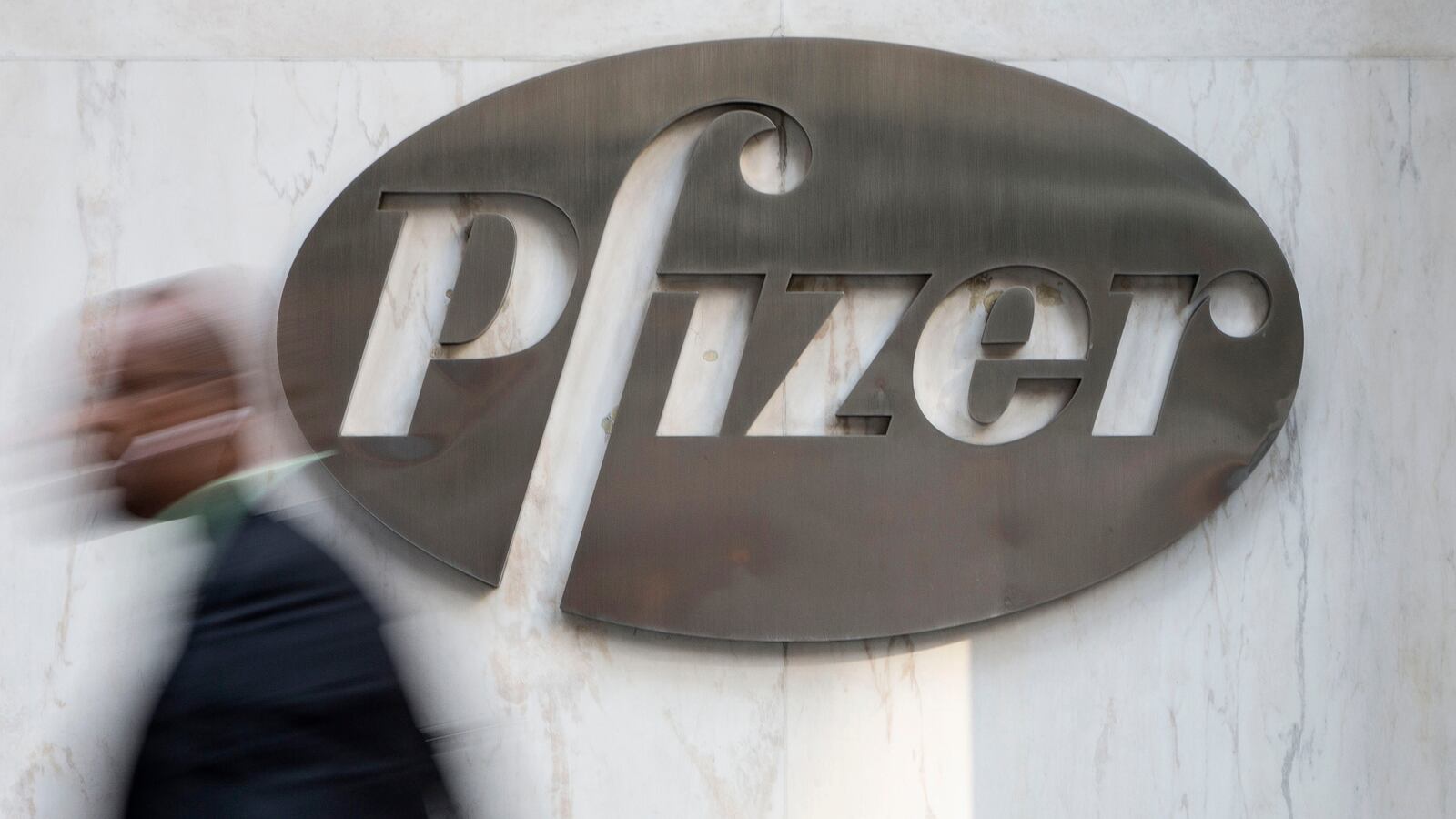“How is that we hear the loudest yelps about liberty from the drivers of negroes?” British pamphleteer Samuel Johnson wondered acidly in 1775 about the American colonists who complained about the heavy yoke of taxation. (The pamphlet was entitled Taxation No Tyranny.)

Today, we might ask how it is that we hear the loudest yelps about the danger of high federal taxes from companies whose business relies in part on… federal tax payments.
It would seem like a self-defeating move for a government contractor to become a tax exile. But, in effect, that’s what the drug giant Pfizer is aiming to do.
Pfizer is undertaking an audacious $100 billion bid for rival AstraZeneca. The rationale for the deal? Pfizer, like many giant pharmaceutical companies, has been struggling in recent years. Patents on key drugs like Lipitor have expired, and it is increasingly difficult (and expensive) to create or buy new blockbusters. Pfizer’s revenue fell 6 percent last year.
Merging with another giant would boost revenue for Pfizer, and set the stage for another epic round of cost-cutting. And it would provide an opportunity for the New York-based company to save a ton of money on taxes. Why? AstraZeneca is based in the U.K., which has a substantially lower corporate tax rate than the U.S. By executing an “inversion,” Pfizer would effectively renounce its American citizenship and thus slash its annual tax bill significantly. As Jesse Drucker and Zachary Mider of Bloomberg noted, “the U.K. corporate tax rate is 21 percent—next year dropping to 20 percent—compared with 35 percent in the U.S.” Last year, (see page 77 of this report) Pfizer had to set aside about $2.26 billion for federal U.S. income taxes.
There is something pathetic and unseemly about this. Yes, we live in a global world and companies must operate across borders. But Pfizer is an American company. It was founded in New York in 1849, and has benefitted greatly from its citizenship over the years—a relatively stable dollar, a government that protects intellectual-property rights and paves the way for free trade, an educational system that produces skilled scientists and managers. And here’s what is really galling about Pfizer’s desire to move offshore: The company gets a big chunk of its revenue from the federal government.
We typically don’t lump Pfizer and other drug companies in with other government contractors like Lockheed Martin or Booz Allen, which rely on federal spending for a huge percentage of their revenue. But policy and demographic changes in the past decade have made federal taxpayers a bigger player in the health-care business generally, and in the pharmaceutical business in particular.
In 2003, Congress and the Bush administration joined forces to create Medicare Part D—the prescription-drug benefit. The Affordable Care Act, enacted in 2010, provided more funding for prescription drugs in benefitting by eliminating the so-called donut hole. Meanwhile, as the nation has aged, more Americans have become eligible for all of Medicare’s benefits. As of this month, some 37.4 million Americans participate in Medicare Part D. A slack economy and the expansion of Medicaid have also pushed millions of more Americans into the joint federal-state program that covers health costs for the poor, including prescriptions. Last year, there were some 62 million Americans on Medicaid.
This all adds up. According to the Kaiser Commission on Medicaid and the Uninsured, Medicaid spent $8.9 billion on prescription drugs in fiscal year 2012. According to the government, in the 2012 fiscal year, the government made $60.6 billion in payments under Medicare Part D, and the projected sum for fiscal year 2013 was $69.2 billion. Combined in 2012, those two programs accounted for nearly $70 billion in spending on prescriptions. That year, for comparison’s sake, Americans spent $263.3 billion on retail prescription drugs.
IMS Health tabulates the numbers of prescriptions dispensed by payment type. It found that in 2009, 62.9 percent of prescriptions were paid for by commercial third parties (insurers), while 19.9 percent were paid for by Medicare Part D and 8.3 percent were Medicaid. But in 2013, as more Americans lost coverage or became eligible for government programs, commercial third parties accounted for only 57 percent of purchases, while Medicare Part D and Medicaid, accounted for 26 percent, and 9 percent, respectively. Combined, those two government programs paid for about 37 percent of all prescriptions dispensed in 2013, up from 26 percent in 2009.
Pfizer doesn’t disclose or break out how much of its revenue is tied to specific programs like Medicare or Medicaid. But the company had revenue of about $51.6 billion in 2013, about 40 percent of which came from the U.S. market. If we assume, for argument’s sake, that about 25 percent of its U.S. sales are paid for by Medicare and Medicaid, that’s more than $5 billion each year. And that is likely understating the total. Beyond the huge numbers of people on Medicare and Medicaid, the federal government effectively covers the health costs of more than 1 million federal employees as well as millions more via the Veterans Administration and other programs.
Pfizer is all for this trend. “Pfizer actively supported the Medicare Prescription Drug benefit which became law in 2003,” the company notes. “Under the new Medicare law, Medicare beneficiaries have all or part of their prescription-drug costs covered by the government.” And Pfizer, like all the drug companies, gives discounts to the government in the form of rebates.
But the company’s top executives don’t seem to realize that corporate accounting moves have the potential to undermine its businesses. If every company and individual were to follow Pfizer’s lead and seek an offshore domicile, who would be left to fund Medicare and Medicaid? Some people may still regard taxation as tyranny. For many, however, it’s a source of profit.





